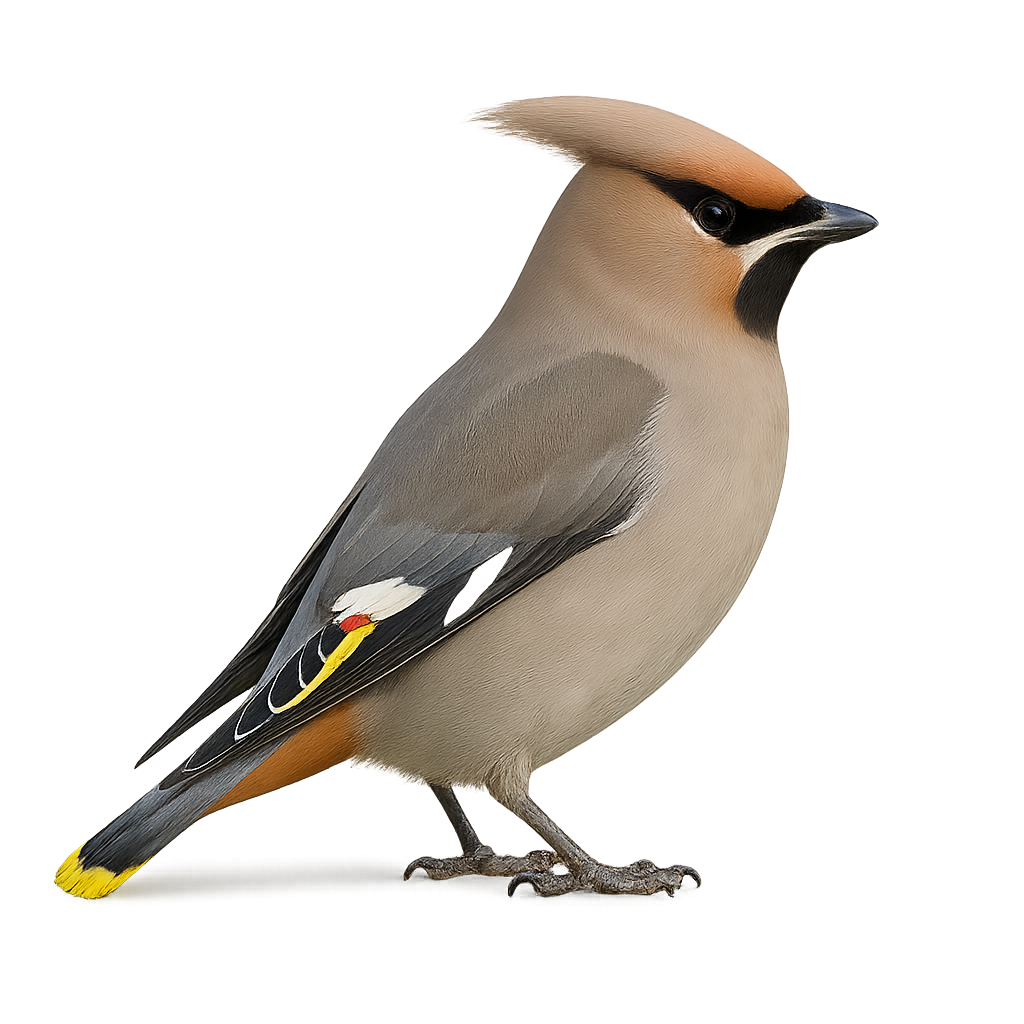Your wildlife photography guide.
Explore the bohemian waxwing in detail, study its behavior, prepare your shots.
Where to observe and photograph the bohemian waxwing in the wild
Learn where and when to spot the bohemian waxwing in the wild, how to identify the species based on distinctive features, and what natural environments it inhabits. The WildlifePhotographer app offers tailored photography tips that reflect the bohemian waxwing’s behavior, helping you capture better wildlife images. Explore the full species profile for key information including description, habitat, active periods, and approach techniques.
Bohemian Waxwing
Scientific name: Bombycilla garrulus

IUCN Status: Least Concern
Family: BOMBYCILLIDAE
Group: Birds
Sensitivity to human approach: Suspicious
Minimum approach distance: 20 m
Courtship display: May to June
Incubation: 13-14 jours
Hatchings: June
Habitat:
Coniferous forests
Activity period :
Primarily active during the day, with peak activity in the morning and late afternoon.
Identification and description:
The Bohemian Waxwing is a small colorful bird, easily recognizable by its characteristic crest and the black edges of its feathers. It measures about 20 cm in length, with a wingspan of 30 to 35 cm, and weighs between 50 and 70 g. Its plumage is primarily light gray with bright yellow and red hues on its wings and tail, and it has red and yellow feathers decorating the tips of its plumage. The Bohemian Waxwing primarily inhabits the dense coniferous and deciduous forests of northern Europe and Asia, as well as North America. It is often found in groups, feeding primarily on berries, especially those from juniper and sea buckthorn trees, but it can also eat insects and seeds. This small passerine is also known for its soft call and social behavior, particularly during migration in groups. Although the species is not endangered, it is sensitive to climate change and the availability of its preferred food, berries.
Recommended lens:
400 mm – adjust based on distance, desired framing (portrait or habitat), and approach conditions.
Photography tips:
Use a telephoto lens to photograph from a distance, respecting the discreet nature of the species.
Photograph early in the morning or late in the afternoon, when soft light highlights the Bohemian waxwing's colorful plumage.
Look for it in open wooded areas, such as mature conifer forests, particularly spruces. Outside the breeding season, it also frequents parks, gardens, and hedgerows to feed on available fruits.
Be patient and discreet to avoid disturbing its natural behavior. Avoid sudden movements and keep quiet.
Respect its natural environment and minimize disturbances, especially during the breeding season.
The WildlifePhotographer App is coming soon!
Be the first to explore the best nature spots, track rutting seasons, log your observations, and observe more wildlife.
Already 1 439 wildlife lovers subscribed worldwide

